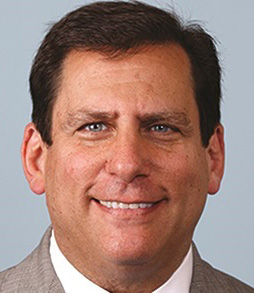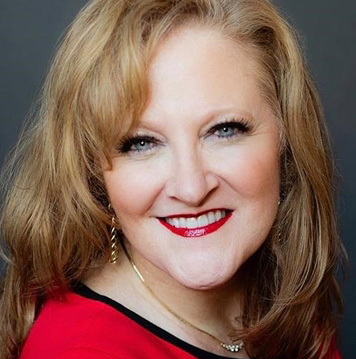
Editor’s Note: Last year (PRN, Nov. 2018) during Measurement Month, we asked senior measurement analysts to assess the state of communications measurement and what’s being done well or badly.
In 2018 the general mood was upbeat. It’s the same in 2019. There’s plenty of very good PR measurement, yet some things need improvement, including downgrading vanity metrics, tying measurement to business goals and a general lack of PR measurement in college programs.
Our 2019 roundtable is composed of PR News columnist and Paine Publications chief Katie Paine; global MD of the International Association for the Measurement and Evaluation of Communications (AMEC) Johna Burke; Mark Weiner, chair of the Institute of PR’s (IPR) Measurement Commission and chief insights officer at Cision; and Alexander Laskin, professor/director of the M.S. program in PR at Quinnipiac University. An edited version of their remarks follows.
PRNEWS: Katie, last November you were optimistic about measurement. “Finally, finally, finally the world is being forced to change the way it measures. The old, bad, stupid metrics we’ve been using for years are no longer fine,” you said. Are you still upbeat?

Founder
Paine Publishing
Katie Paine:Maybe I’m just impatient, but I’m no longer quite as optimistic.
PRN: Why not?
Paine:Because of the outmoded intellectual fog that lingers around measurement. Marketers who learned everything they think they know about measurement in the 1980s and 1990s and haven’t updated their skill set perpetuate this.
That mindset seems content with completely meaningless, but large, numbers, like impressions or social actions.
Worse, they deny access to data that is needed to tie communications programs to outcomes. So many PR pros have as their goals “increase awareness, consideration or preference.” That requires regular surveys of stakeholders. Whether due to budgets or fear of data, they don’t happen.
Agencies often say they want to up their measurement game. Yet they are continually denied access to web analytics or other data that they need to measure accurately.
PRNEWS: Mark, last year you were mixed when we asked about the state of measurement. You said more people are measuring, but there’s too much data and people are confused about what to measure. How about today?

Chair, IPR Measurement Commission
Chief Insights Officer
Cision
Mark Weiner: I am a born optimist and I never let past failure interfere with future success...I’m happy that more communicators apply data to prove PR value and improve PR performance. Still, the profession has a long way to go. And I am pessimistic about those who choose to avoid PR measurement altogether. The dinosaurs would still be here today if only they could predict the weather. Like the dinosaurs, those who choose not to participate in PR’s measurement revolution will eventually disappear.
PRNEWS: Same question, Johna. In 2018 you said, “I’m optimistic because measurement continues to grow. There’s a larger audience of communicators who realize that measurement isn’t an intimidating factor, but can actually stimulate success.” Do you feel that way today?
Johna Burke: Yes. I see more success every day on a global scale. Teams that are driving results through outcomes vs. outputs continue to prove the case for PR and good measurement and evaluation. When evaluation is meaningful, organizations come to rely on the data to make informed decisions.
PRNEWS: Mark, when we asked in 2018 what issues measurement faces, you mentioned the diminished standard of what’s good enough; confusion about what automation can and can’t do; and that measurement remains a matter of unwillingness rather than inability. Is that still the case?
Weiner: While more PR pros may be measuring now with the introduction of low-cost/no-cost automated platforms, the standard in most companies continues to evolve beyond what tools alone can accomplish.
As PR is progressing in its adoption of data-informed decision-making, so too is every other area of the enterprise. The result is that executives seek more than data. They know enough to be cynical of data without context. Today’s data-informed organizations seek insights, not just data, charts and graphs that technology alone produces.
To achieve the outcome executives prefer, we need technology. But technology alone functions as a complement to sector expertise and statistical acumen. The combination of these three elements is the foundation for insights and the basis for success.
PRNEWS: Same question, Katie. What are some of the issues with measurement? Last year you said vanity metrics and activity metrics without a point. Is that still the case?
Paine: Lack of access to the right data – data that is accurate, relevant and meaningful certainly is one major issue.The other huge issue is the lack of business acumen among PR pros. Far too many entry and mid-level PR people have little or no training in business and thus have a hard time defining measures of their success that relate to business goals. And one more pet peeve – the lack of consistency, relevance and accuracy in media monitoring and social media “impression” counts. Everyone seems to think that bigger is better – but it’s just less accurate.
PRNEWS: Johna, last year you noted PR measurement had a problem with definitions and the amount of black box behavior. How do you feel about those issues in 2019?

Johna Burke
Global MD
AMEC
Burke: Those problems continue to exist, but the biggest challenge is a lack of planning and seeing measurement as a ‘What did we do?’ vs. ‘How are we supporting our organization’s overall objectives?’ PR teams using the ‘To do what we are doing better’ analysis and/or ‘How can we pivot from ineffective work or course-correct based on the data?’ are earning respect, budget and influence with their C-suite.
PRN: We asked you in 2018 about what’s being done well in measurement. You said, “The effort to look at communications as an integrated whole...[which is] forcing communicators to define business value in what they do.” Is there something new that is impressing you?
Paine: Yes. The trend away from PR-only or social media-only dashboards and the interest in integrated communications, PESO dashboards. Google’s Data Studio is making integrating data much easier. People are starting to use these dashboards to discover connections between activities and desired outcomes.
I’m also happy about the renewed interest and emphasis on human-curated or human-analyzed data among measurement vendors. Automation and machine coding are no longer differentiators. I’m seeing more vendors and organizations emphasizing the importance of human curation. FullIntel, Agility PR and even the Prime Research parts of Cision are a few that are pushing the human analysis benefit. The reality is that in the near future AI will drive most of the data collection, but humans still are needed to understand what the data means.
PRN: Last year, Johna, we asked you what you’d like to see improve by this time next year. You said the “biggest opportunity is for communicators to speak the language of their organization...it’s one thing to take counts and amounts and put them in a pie chart...it’s another thing to give that contextual layover and tell people what the data means for the business.” What about now?
Burke: My 2018 answer stands, but now I have a better understanding of a primary barrier to success. Many teams still lack effective planning and clearly stated measurable objectives. [Ed. Note: This month AMEC is launching a PR Planning Guide to assist you set clear, measurable objectives.]
PRNEWS: Mark, last year you spoke about the importance of attribution analysis. Has it fulfilled your expectations?
Weiner: In short, yes. In 2019, the profession has recognized attribution analysis’s ability to properly identify, quantify and attribute PR’s contribution to more meaningful business outcomes, such as awareness, engagement...and sales.
PRNEWS: Is there enough emphasis on PR measurement in college and grad PR programs?

Professor
Quinnipiac University
Alexander Laskin: Certainly not. It’s rare to find a master’s program with a course on measurement and evaluation as an elective, let alone a required course. In fact, even PRSA’s standards for Certification in Education for Public Relations do not specify a required course or content area focused on measurement and evaluation. At best, some master’s programs have a research methods course.
PRNEWS:What would you recommend?
Laskin: There should be a required course covering PR measurement and evaluation.
PRN:A young PR pro lacks knowledge of measurement. How can that be overcome?
Laskin: As a professor, I recommend required readings [laughter]. Seriously, there are many good books, articles, and case studies available. Start with leading trade publications and then proceed to more advanced content from the Chartered Institute of Public Relations, Institute for Public Relations, International Association for the Measurement and Evaluation of Communication, and, of course, PRSA. There are seminars and webinars available from a lot of sources. A few colleges offer courses, online or on campus.
PRN: What’s the most difficult area of PR measurement for students to grasp?
Laskin: The general idea of measurement’s importance. Until you have an executive or client stand up in a meeting and ask, ‘What exactly did you do for me?’ you do not realize how important evaluation is and how it should be the keystone of any campaign planning, not an afterthought.
CONTACT: [email protected] [email protected] [email protected] [email protected]
